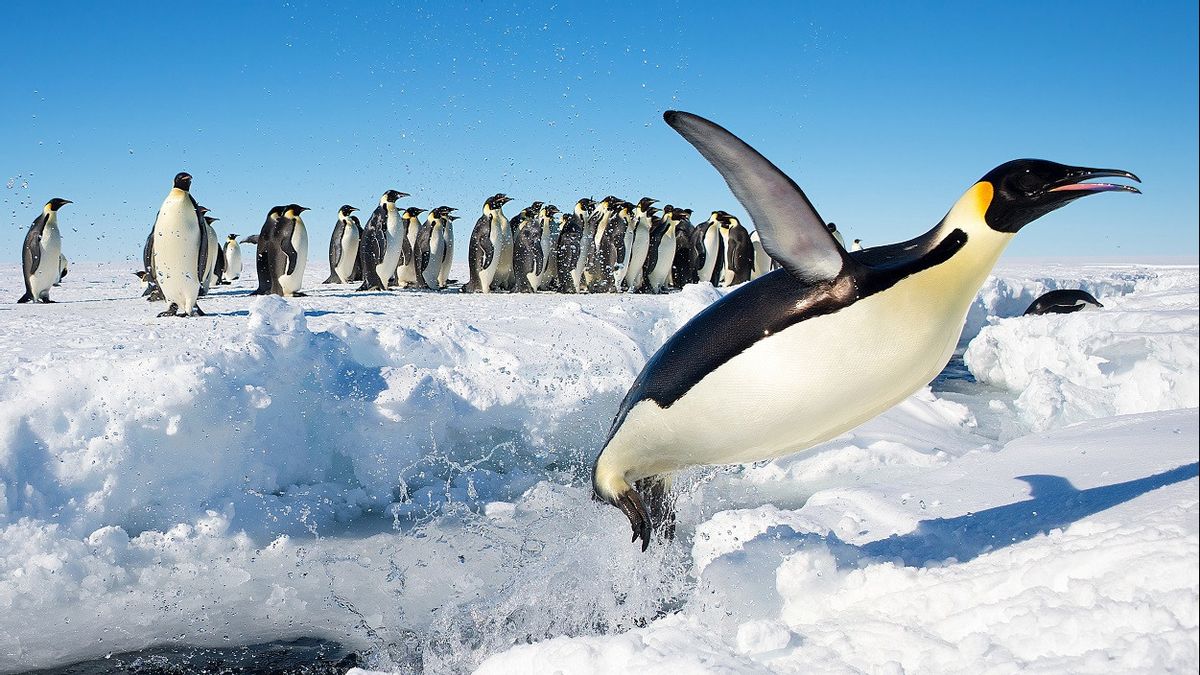JAKARTA - A giant iceberg, four times the size of Abu Dhabi, has slipped from the frozen edge of Antarctica into the Weddell Sea, becoming the world's largest floating iceberg.
Its surface area reaches 4,320 square kilometers. It is 175 km long and 25 km wide, said the European Space Agency, as reported by The National News, Thursday, May 20.
For comparison, the capital city of the United Arab Emirates has an area of 972 sq km. The popular tourist island of Majorca in the Mediterranean, Spain has 3,640 sq km, while the state of Rhode Island in the United States (USA) has a land area of only 2,678 sq km.
The newly born mountain, named A-76 by scientists, is seen in satellite images taken by the Copernicus Sentinel-1 mission, which the European Space Agency uploads on its website with photos of the massive, oval ice sheet.
The plate, which broke away from the Antarctic Ronne Ice Sheet, ranks as the largest iceberg on the planet. This surpasses the A-23A which is now placed in second place, with an area of about 3,380 sq km and also floating in the Weddell Sea.

Another large Antarctic iceberg threatening a penguin-populated island off the southern tip of South America has lost most of its mass and broken into pieces, scientists said earlier this year.
A-76 was first detected by the British Antarctic Survey and confirmed by the Maryland-based US National Ice Center, using imagery from two polar orbiting satellites.
Last year, currents carried the A-68A iceberg, the largest in the world at that time, from Antarctica to the coast of the island of South Georgia.
Average sea levels have risen about 23 cm since 1880, and about a quarter of that increase has come from melting ice in Greenland and Antarctica due to global warming, along with land glaciers elsewhere, according to a study published in the science journal Nature. earlier this month.
The study by 84 scientists from 15 countries concluded that the more ambitious national goals of reducing greenhouse gas emissions and slowing climate change that were set recently were not enough to stop sea level rise.

In fact, melting glaciers and ice sheets will raise sea levels twice as fast, if countries fulfill their previous pledges under the Paris Climate Agreement.
The Ronne Ice Shelf on the Antarctic Peninsula side is one of the largest, of several enormous floating ice sheets that connect to continental landmasses and extend to the surrounding seas.
Some ice sheets along the Antarctic Peninsula have experienced rapid collapse in recent years, a phenomenon scientists believe may be linked to climate change, according to the US National Snow & Ice Data Center.
The Ronne Ice Shelf is one of the largest collections of floating ice, and ice formation is part of a natural cycle. This is different from when ice breaks from a glacier and melts into the ocean, causing sea levels to rise.
"Because the ice sheets are already floating on the ocean, they don't contribute directly to sea level rise when they break," the National Snow and Ice Data Center said.
"However, ice shelf collapse can cause sea level rise indirectly. Ice flows and glaciers are constantly pushing up ice shelves, but these shelves eventually block coastal features such as islands and peninsulas, creating pressure that slows their movement out to sea," the statement said. that.
The English, Chinese, Japanese, Arabic, and French versions are automatically generated by the AI. So there may still be inaccuracies in translating, please always see Indonesian as our main language. (system supported by DigitalSiber.id)













